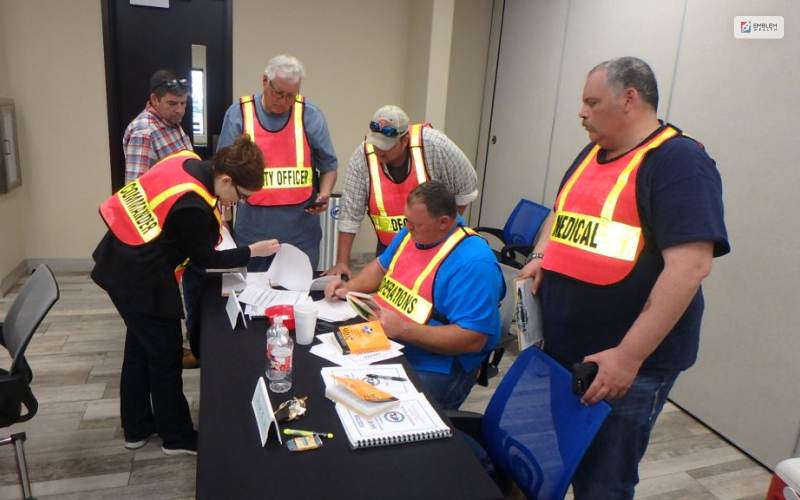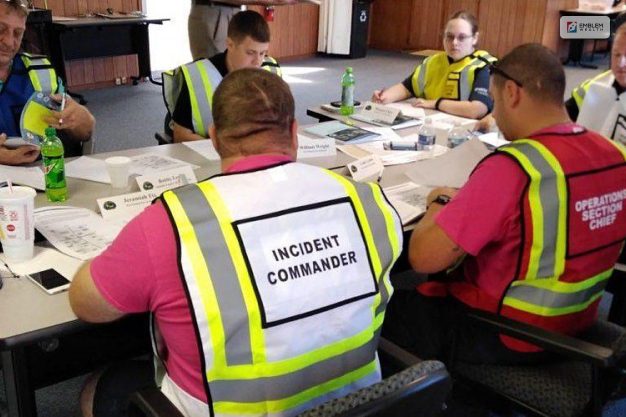How Many NIMS Management Characteristics Are There?

Want to know how many NIMS management characteristics are there? You have found the right place.
While it is true that most companies are prepared for emergency incidents, it can still get difficult for them to manage themselves in times of incidents that are unforeseen. That is the reason why we have NIMS or the National Incident Management System.
The main function of the NIMS is to Protect, report, manage, respond to, and recover from the incidents that the organizations of a country come across or face. And there are several sections of the NIMS that do their assigned tasks. One of them is ICS.
Keep reading this article till the end to learn more about the ICS and its characteristics that make it an important part of NIMS…
What Is The Main Function Of ICS?
The ICS or the Incident Command System is one of the integral parts of the NIMS. The main function of the ICS is to control, command, and coordinate the various ways in which a particular incident of emergency is to be managed.
However, there are several characteristics that make up the ICS. Want to know more about these characteristics? Keep scrolling till the end…
How Many NIMS Management Characteristics Are There?
Now that you know what ICS is and what its function is, it is time to get to the main part— how many NIMS management characteristics are there?
Well, there are exactly fourteen (14) NIMS characteristics that the ICS must have in order to be able to manage the incidents during the times of emergencies. So here are the characteristics of NIMS that you are looking for:
- Common Terminology
- Management By Objectives
- Modular Organization
- Incident Action Planning
- Incident Facilities and Locations
- Manageable Span of Control
- Comprehensive Resource Management
- Establishment and Transfer of Command
- Integrated Communications
- Unified Command
- Accountability
- Chain of Command and Unity of Command
- Information and Intelligence Management
- Dispatch/Deployment
Now let’s take a closer look at these characteristics, shall we?
1. Common Terminology
The common terminology of NIMS helps various organizations to come together and work in times of emergencies. There are three things that come under this— organizational functions, incident facilities, and resource descriptions.
2. Management By Objectives
There are certain incident objectives that are to be kept in mind during times of facing emergency incidents. The Incident Commander is the one to establish the incident objectives.
3. Modular Organization
Based on the size or nature of the incident at that time, the ICS develops a particular strategy. This means that the ICS and the way it will deal with a particular incident are supposed to be flexible and modular. This is the characteristic of being a modular organization in ICS.
4. Incident Action Planning
This characteristic of the ICS aims to guide the system towards an effective way of managing the incidents. In simpler words, the ICS should be able to form and work effectively on incident management activities.
5. Incident Facilities and Locations
There are incident support facilities that are to be maintained by the Incident Commander. They are to be used and identified by the ICS depending on the location and the need of the incident.
6. Manageable Span of Control
The manageable span of control is the number of resources or the individuals that a particular supervisor can manage at a given time during the time of the emergency incident.
7. Comprehensive Resource Management
These characteristics refer to the mechanisms that deal with the management of resources. For example, from identifying the requirements, reporting and tracking the status of the incident, as well as maintaining the inventories— all of these come under the characteristic of comprehensive resource management.
8. Establishment and Transfer of Command
The important characteristic of the ICS is that the commands need to be established as well as transferred from time to time to ensure that the system is efficiently managing the incident. Therefore, it is one of the primary responsibilities of the ICS.
9. Integrated Communications
This characteristic of the ICS allows the various organizations or the units of different organizations to connect and share with each other during the time of incidents. This helps them to smoothly manage the incident and bring the situation to normalcy.
10. Unified Command
The characteristic feature of the Unified Command in the ICS makes it possible for the body to ensure that power is distributed. This not only ensures that there is no single agency or jurisdiction taking control.
11. Accountability
During the time of emergency incidents, the organizations, as well as the people who are managing the incidents, are accountable to the ICS. This is to ensure that they abide by the guidelines of the incident management system.
12. Chain of Command and Unity of Command
There has to be an order of hierarchy in the ICS. This makes sure that during an incident or emergency, there is an order that is followed. This point links back to the point of accountability.
13. Information and Intelligence Management
This characteristic feature of the ICS allows the body to analyze, procure, manage, and track the resources of incident management.
14. Dispatch/Deployment
Last but not least, we have the characteristic of dispatch or deployment. The people who are involved with the management must know that the reports or resources are to be dispatched only through certain established procedures.
Frequently Asked Questions (FAQs)
As you have almost reached the end of this article, I hope that all your doubts regarding how many NIMS management characteristics are there are cleared. First, however, you might want to check out some of these questions that readers frequently ask about the same for more information.
NIMS stands for National Incident Management Systems. It coordinates and manages the working of several organizations, both governmental as well as non-governmental.
The ICS or Incident Command System is the body of the NIMS that allows the users to have or adopt a structure that helps them to match the demands as well as the complexities of incidents that might take place.
It is all about the standardized approach that helps the organizations to command, control as well as coordinate the organizations in times of emergency incidents.
The full form of the MAC Groups or MAC is MultiAgency Cooperative System. Its function is to look after, prevent, report, and manage the incidents that take place in the multi-agencies of the country.
Wrapping It Up!
NIMS, or the National Incident Management System, is the organization that overlooks the working and manages or prevents the incidents that take place in governmental and non-governmental organizations in the country. There are several functions of the NIMS and, likewise, several characteristics that it must have.
The Incident Command System or the ICS of NIMS has a total of fourteen characteristics that helps it to efficiently manage the system.
In case you were searching for the answer to “how many nims management characteristics are there,” I hope that you found his article of sufficient help. However, if there are any other queries or confusion regarding the same, please feel free to write them down in the comment section below.
Read Also:



























Leave A Reply